|
Al: Before going any further. What is the exact pronunciation and spelling of Genghis Khan? John: That's the French version. The Mongolians like you to spell it-Chinggis Khan and pronounce it "Chingiz Khan". Chinggis Khan is very important for the Mongol national identity. We are talking about a very young nation. It has only been since 1990 that there have been Chinggis Khan t-shirts, hotels, cigarettes, beer, and restaurants all over the place. These things were not allowed during the period of Soviet influence. There is a tremendous interest in Chinggis Khan in Mongolia today. Al: How are you going about looking for his burial site? John: A Mongolian document, The Secret History of the Mongols, estimated to have been completed in 1240, is being used by us. One of our team, Dambyn Bazargur, has taken information from this document and has tried to map it to the terrain of modern Mongolia. What we have done has been to verify claims that Bazargur has made in his atlas. That's why we were led to certain places as opposed to others. Two years ago, we went to one of the sites where most people believe he is buried in a mountain called Burkhan Khaldun but were literally driven off by blood sucking flies-big flies. We are going to need helicopters and all sorts of equipment, which we just don't have at this point. Instead, we began to investigate on the side of a large hill called Oglogchin Kherem. There is wall that goes all the way around the hill and all the way up the side. It is two miles in circumference and ranges in height from eight to twelve feet. It was a huge undertaking. When we saw it, we wondered who could have built this and for what purpose? It would have taken a pretty large organized group of people to have built it. When we excavated the sites, we began to discover a series of depressions in the ground. When we excavated these depressions, we came across a flagstone-like terraces. When we picked the stones up, we found underneath them, sets of channels. In these channels, we could see blackened areas, possibly from burning charcoal. There were animal and human remains in those channels.
Al: Would they have been nomads mostly during this period of time? John: The term nomads is a misnomer. Let me give you an idea. We are not talking about people traveling great distances, like the horse nomads of parts of Turkey or Iran who would travel as much as two hundred kilometers to go from summer to winter homes. People don't move that much here. Some of these tents were fairly permanent. So, you are talking about fairly short movements, not long ones. We found a skull of a young woman near one of these channels. We know that it was not a burial because we had only the skull and either the humerus or femur. Therefore, I'm thinking that these channels might be sacrificial. Al: Was she burned? John: There was burning all around, but it was not a burial that's for sure.
While we were away, some of our Mongol colleagues stayed on the site, and they found a burial about a meter down. We have since taken the wood from the coffin and have ascertained that the coffin dates from the 13th to the first part of the 14th century-that was the Mongol period. We further know that it was a Mongol burial because it was orientated toward the north, which is the Mongol custom. When they build a building, the door is always toward the south. Al: What is the reason for this? John: The north is a position of honor. That is where the head of the household sits. And the other burial like this that we found was oriented toward the west and was very badly deteriorated. This one is so well preserved. We found an urn there and tried to ascertain whether it was food or what would have been inside it. Perhaps water. Whatever it was inside, it was meant to accompany you on the journey to the other side.
We excavated inside the wall itself this year, and we found some organic material that may allow us to date this building of the wall. We would like to send off a sample to have it carbon dated, but we just don't have to funds right now for testing. Al: Is there any way of knowing what the terrain was like at the time? Are you fairly confident that this is pretty much what it looked like? John: I would assume that those areas were probably covered with forests very much like they are today. There are lots of fires there. These fires are generally caused by lightning strikes, so I assume that that was probably a phenomenon at the time also-forest that were burned and then replenished. I don't think there has been any big change. I know that one of the theories about the movement of the Mongols and a lot of other people for that matter, is the so-called "desiccation theory" where a place dries out and cannot not any longer support people and animals. So, they have to move some other place. We do know that there are cycles of wet and dry periods in Mongolia. We happened to be there during this summer; it was exceptionally wet. The rain caused us so much trouble that a lot of the instrumentation that we had taken along with us was useless. I think the last big wet period occurred in 1994. It goes in cycles, and I don't think there is any reason to think that the land has changed tremendously over the centuries.
Al: So, it was that book that caught his imagination. John: Yes. It started with that book. Two years ago, we were at a place in Mongolia that we affectionately call Mt. Maury. He was back in Chicago. I called him and said, "Maury, you've got to tell me now because we are here at a graveyard that is extends for about three km. along the top of a mountain. If you know something, you've got to tell me now." He said, "I can't find it right now." I replied, "What do you mean! We are here! We are ready to start doing something! You've got to tell me!" He finally told me, "Well, it's in some old book. I asked what book? There are only about five sources that it could come from. In this book, Chinggis Khan had talked about a place where he wanted to be buried. He had coupled it somehow with another statement where Chinggis Khan stood at the confluence of two rivers and could look over his shoulder and see snow-capped mountains. Somehow, Maury had taken those two things as the place where he was buried. The place where he could see the mountain over his shoulder and the place where he said he would like to be buried. But, it turned out it was a huge graveyard. Maury did not go up to the top of the man to see these graves that just unrolled before your eyes. So, it turns out that this was Maury's site, and he then put all his eggs in this basket of where we are now. It very well could be the burial place of Chinggis Khan's father. Now, if his father was buried there, it is possible that Chinggis Khan himself might be buried there. Or would he have been taken to another place for a more imperial burial ground. They might they have moved the remains of the father after the son had become so famous-he had conquered the world. Would they have moved the bones of the father to this new site? The Mongolians say absolutely not; it would never happen. They wouldn't do that unlike Christians, Muslims, and Jews who do move bones. The Mongolians wouldn't do that because of this Shamanistic notion that you could destroy a person's spirit by interfering with their physical remains.
Well, the wall could have been built at a later time. In fact, there is a tradition, again it is from the Chinese sources, that Kublai Khan's grandson, his name was Kamala, was a military governor of that area. Kamala is credited from sources with having built a number of structures for the worship of his ancestors. Now, I would love it if this wall were built by Kamala. However, it still could be built for the worship of ancestors and not be the grave of Chinggis Khan. There are many graves inside this area still. Whatever we said at the time, there may be more than that. Our group looked at this issue this summer, and they all seemed to be pre-Mongolian. We don't know what period these graves may derive from, but we found the grave at the base of a rock formation that we call "the stupa." There is one thing that is very appealing to me: this is very curious to me. It looks like an ideal place where people could have dug into the side of this place. I would really like to examine this more thoroughly.
So, we plan to continue. I want to divide our workforce in half: half of the people would continue to work on this, and the other half would work on satellite expeditions. We are going to a couple other places that are recommended to us by our "ancient" Mongolian archeologist. He says that he is a piece of archeology himself. He's 80 years old and is an incredible guy. There is a saying in Mongolia that a Mongolian 70 years old is dead. Here is this guy 80 years old who is just an incredibly vigorous person. I want to start next year, half the people here will continue to develop this site, the other half, one of these two other places. Al: I'm not sure whether it was you or Maury that predicted on NPR that there are more artifacts in Chinggis Khan's tomb than had ever been discovered in the history of archeology. John: Maury feels that way. His argument runs something like this: Chinggis Khan conquered northern China, he conquered central Asia, and some of the most important Islamic cities of the period. How is it that not one single artifact from any of those areas of conquest has ever turned up any museum or private collection in the world? Where are those things? Well, Maury believes that they are all buried with Chinggis Khan. But we just don't know. There has been no imperial Mongolian period tombs ever found. None of the other descendants of Chinggis Khan have even been found either. The great-grandsons of Chinggis Khan in Iran were the last ones according to a near-contemporary source buried in Mongol fashion in those lands with sacrifices of young girls and large amounts of arms and booty. They are buried on an island, we know where that island is, and no one has ever found those tombs either. We have never found the tombs to know what to expect. According to Maury's argument, there are great treasures to be found, and that is why he was designated a treasure hunter and that he is going for all the treasures. However, if we did find treasures, they would belong to Mongolia. We wouldn't be able to take anything out of the country unless they allowed us to take something for exhibition, for analysis, or to study. I have said to others that this expedition focuses attention on the importance of other parts of the world and their history. If I can cause people to look at the importance of other parts of the world and the contributions of other peoples to world history, I will have achieved part of my aim. This is what I have spent my whole life doing as an educator. In addition, this is one of the greatest adventures that a man my age could hope to participate in.
Al: I'll be sure to look for the movie. With all the time that you have lived with Chinggis Khan, do you have a sense of him? John: We have a history that's written more or less in his lifetime by someone who probably knew him, and that's about as close as you can get, aside from just purely projecting yourself and reliving the past. He was a guy who when he was a kid, was afraid of dogs. His father said when the father is about to die, "Take care of my son, and remember he is afraid of big dogs. Watch out for that." There is no physical description of him anywhere. There is one reference in a work that was written in north India that stated that he was tall and broad shouldered and had eyes like a cat. All the Chinese versions of what he looked like make him look like a Confucian prince. There is a modern painting that Maury had commissioned and of course, it looks little like Maury. There is an official one that is used in all ceremonies, etc. in Mongolia, but nobody is really happy with it. It is the Chinese version and Mongolians don't like Chinese very much. There is the Indian version of what he looked like, but it looks like a typical Indian Muslim ruler. So, what did he look like? No one knows.
Al: I tried to get an interview with the Dali Lama last weekend and failed for my second time, but we are good friends with his brother and were in Bloomington, Indiana for the dedication of the new temple. His Holiness had come back for the dedication. In the honored seats in front of the Dalai Lama were Tibetans and next to them were the Mongolians. John: Oh, I'm sure. I have become very interested in Tibetan Buddhism myself. Al: Tell me about your childhood. John: I was born in Aruba. Al: So, how did a nice kid from Aruba get to the University of Chicago? John: My father was in the construction business. He was an electrician who was forced to leave college in the Depression. He began to work on foreign jobs because they paid more than jobs in the U.S., and I was born on the first foreign job they went on which was in Aruba. There was a big oil refinery there. He worked on foreign jobs all this life, and we lived my earlier years into my teenager years in Latin America-Venezuela specifically. In 1955, he got a job in Iraq, so we were off to Baghdad. My father was always concerned about me getting proper credits to get into college in the States. He was very determined that I was going to go to college and finish which he had not done. The nearest good American school was in Beirut. There was a correspondence school in Baghdad, but he didn't want me to do that. He wanted me to have a real proper education, so he sent me off to Beirut. It was a wonderful school. I was there in 1955-56. It was a good school that has been around since 1906. It turns out there are a half-dozen people on the faculty at the University of Chicago that went to that school in Beirut. That's pretty amazing. The school sponsored trips to areas all around there, so in a very short time we went to Syria, Jordan, Turkey, and Egypt. I got to see almost all of the Middle East. Then when I came back to Baghdad in the summer after I graduated my dad took me to Iran. He had been in Iran during WWII at a refinery there. In the space of a year and a half, I saw the Middle East, and I never got over it. I floundered around in college for awhile until I really realized that I wanted to do something with the Middle East. Al: : You got your doctorate at Princeton? Where was your undergraduate work? John: University of Texas. That was about the time of the passage of the National Defense Education Act that was passed in 1958, which was in my junior year. Money started coming into universities in '59-'60 for the study of foreign languages and Arabic was one of the languages that was deemed to be critical to national security. This Center of which I am the director has been getting money from the government since the early 1960s. Since that time, we have been training people in Arabic, Turkish, Persian, and now Uzbek and Armenian. Al: Would you speak to the problems that we are having in the Middle East presently with the so-called clash of civilization. We have certainly aggravated the extreme right in Islam. John: Well, that was aggravated a long time ago. We didn't do that necessarily ourselves.
I think rather it's a coming together of maybe related and unrelated trends: one is the rise of America to sole dominance in the world-something that many people date from the time of the Spanish-American War and the rise of America to an empire. This ascendancy is certainly true after WWII. Then there is the so-called defeat of the Soviet Union in the Cold War. Now, America is the sole and unchallenged power of the world. That coincides with the rise of globalization, economic globalization, etc. In Mongolia for example, China has recently complained to the Mongolian government that it is becoming too Americanized, which it probably is. Islam and the Islamic world have had an adversarial relationship with the Western culture since WWI. Before that of course, most of the Islamic world had been colonized or had some form of dependence on the European powers. After WWI, that began to change. Early in 1920s, there were uprisings against the Western powers throughout the Islamic world all the way from the Riff War in Morocco to the revolts against the Dutch in Indonesia. This agitation eventually got submerged in WWII. After WWII, there was a massive decolonization allegedly, in which these countries became independent, and some got rid of those ruling strata that had been imposed on them. The monarch of Egypt was overthrown in the early 50s or the monarch in Iraq set up by the British was overthrown in 1958 or more recently, the fall of the Soviet Union and the liberation of several former Soviet republics. This was seen by many Muslims as a sign, the same way that evangelicals are looking at the creation of Israel as being one of the signs of the end-days and the rapture. Muslims saw the liberation of these Muslim republics in Central Asia as such a sign. In Afghanistan, our government attempted to use things like Jihad against the USSR. Then there is the whole Palestinian conflict and our continued support of hated regimes in Egypt, Saudi Arabia, etc. Saddam Hussein is a kind of super Noriega. He was our guy once wasn't he? The time when he was gassing the Kurds was the time when Rumsfeld's and all those people were cozying up to him. So, there is this. I think these three things created the problem: the American rise on the unchallenged world power, economic globalization, and the resurgence of a sense of self-determination in Islamic countries.
In medieval times some Muslim didn't want to accept gunpowder weapons at first. They considered them dirty and people didn't want to use them. It was also considered unmanly. After a while, they couldn't argue with success. The whole society has got to change though, in order for these things to be utilized. Bernard Lewis has written a book called What Went Wrong. It came out just at the time of 9/11, and he says that the Islamic world failed in its attempts to become like us. He points to a couple of things. One was that they lost the spirit of scientific inquiry-it's interesting to understand how you have it, and you lose it. They don't like Western music, they are not open to the culture, and they don't respect women. I don't know whether that explains very much to me. When my mother was born, American women didn't have the right to vote. One of the arguments about how if you had set foot on the earth about the time the Pilgrims disembarking at Plymouth Rock looked around the world, the most powerful nations were all Islamic ones. These were the most powerful, richest culturally on earth. What happened in that period of four hundred years since the 1600s?
I have been thinking a lot about this Mafia business and the informal relations as opposed to the development of formal instruments of government in the Western world. I am not saying that one is better than the other. I do know that I am glad I am in America, but at least I have spent enough time in these other places that I can see how the other thing works. I was thinking about how I have to teach a course in the winters, an undergrad course, it covers a long period of time, 1000 to 1800 in the Middle East and Islamic world. I am going to make this a theme this next year...just try it out and see if we can talk more about the society and the way it is structured as a means of explaining the basic notion that government is incidental or illegitimate in most cases. I know that flies in the face of the way that we portray these governments with brutal dictators who lop people's heads off. Al: What happens to the poor peasant out here? Two-thirds of the world is in poverty anyway. What happens to those people? John: They go on-just like they always have. You see, Americans and Westerners are inculcated with some notion that things are supposed to get better and better. We accept the notion of technological and social progress. Well, you are of an age to understand that that wisdom does not expand the same as technology. Each generation has got to relearn the same things. That is why there is no progress in wisdom and experience. What is the saying, "As I got older, I realized how smart my father really was"? Nonetheless, we are inculcated with this notion that everything is getting better and better. People in other societies don't necessarily feel that, and maybe it's an illusion. Al: My wife and I have done a lot of traveling from India, Tibet, Nepal, Polynesia, Easter Island to Chile. What is truly intriguing is that they all have cyber cafes. It really is interesting to watch young people get connected for about a quarter. They email their cyber friends all over the world. John: There are more cafes and discos per capita in Ulaanbaatar than in any other place I have been in my life. The per capita income in Mongolia is $1000/year. That place is awash in money. There are more beautiful girls there dressed in the latest styles trying to find something to do with themselves than any place I have ever been in my life. I'm involved in a project which may bring a certain number of Cineplex movie theaters to downtown Ulaanbaatar. They will have a new business center, which will have fast food franchises like Dunkin' Donuts and Baskin Robbins. I was just in Korea walking through the airport and saw a Dunkin' Donuts and Baskin Robbins. I thought that the Mongolians are going to like these also! There is nothing like this in Mongolia. Day after tomorrow the person who is behind building this business center is going to be talking to McDonald's China about a McDonald's in Ulaanbaatar. There isn't one there yet, but these are all signs of modernity and being with it.
Al: One quick question before we end the interview: Samuel Coleridge wrote the poem, Xanadu-
In Xanadu did Kubla Khan The story was that he penned those words while under the influence of heroin. Wordsworth came to Coleridge's front door and asked him a question, which brought him back to reality. After Wordsworth left, Coleridge went back to his desk but couldn't write another word. That is why Xanadu ends so abruptly. Where did Coleridge come up with Kubla Khan and Xanadu? John: I think probably he might have read about some palace that Kubla Khan might have built in Beijing or somewhere else. It might have been something like that. But it is a great poem.
|







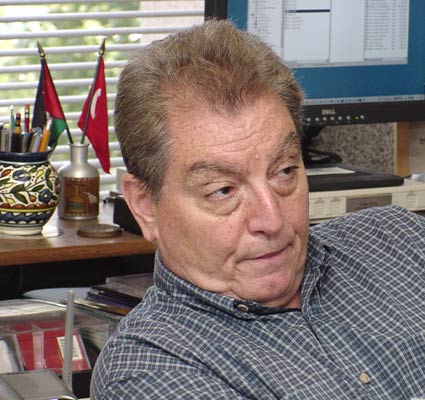 Al: I appreciate the
opportunity to interview about the expedition to discover Genghis Khan's burial
site. I don't think many know about it unless they listen to NPR.
Al: I appreciate the
opportunity to interview about the expedition to discover Genghis Khan's burial
site. I don't think many know about it unless they listen to NPR.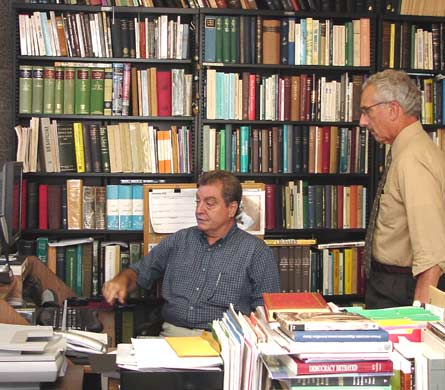 Al: Was it a crematorium?
Al: Was it a crematorium?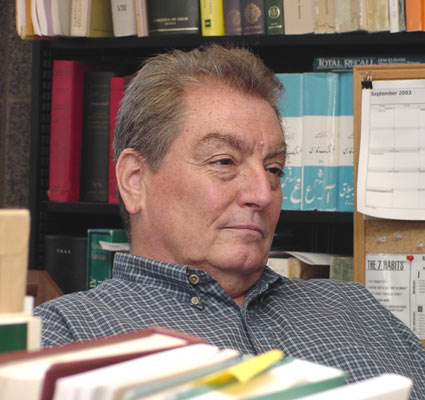 Al: What is it like
conducting a dig in a foreign country like Mongolia?
Al: What is it like
conducting a dig in a foreign country like Mongolia?
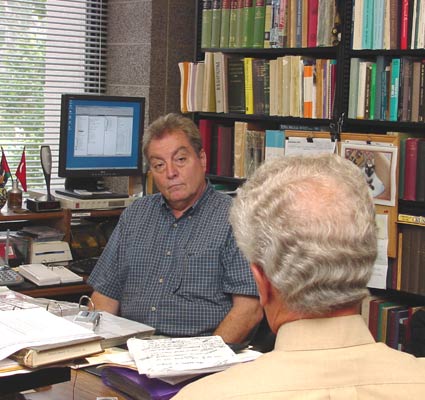 Al: Did you find any other artifacts?
Al: Did you find any other artifacts?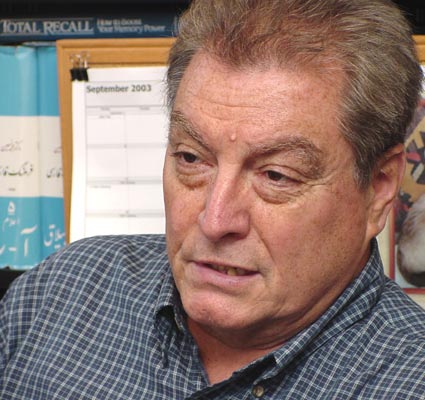 Al: How did you got involved in this project?
Al: How did you got involved in this project?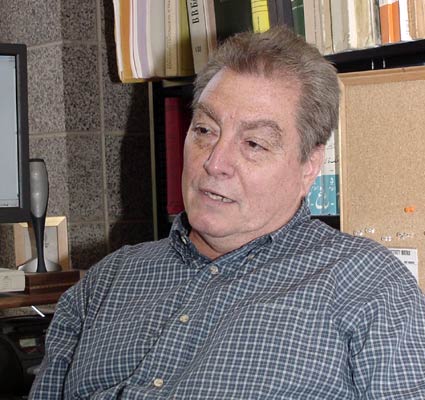 Al: Why would you assume that you would find Chinggis Khan along with many others?
Al: Why would you assume that you would find Chinggis Khan along with many others?
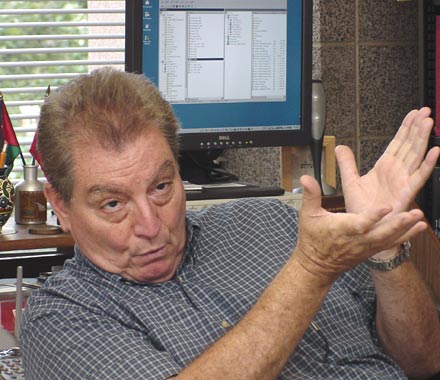 Al: What would you do-test boring and such?
Al: What would you do-test boring and such?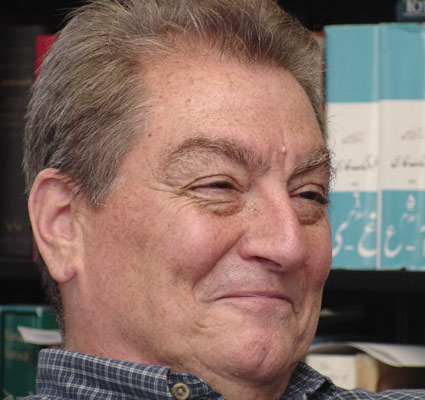 Al: I have heard that the story of the search for Chinggis Khan's tomb is being made into a movie.
Al: I have heard that the story of the search for Chinggis Khan's tomb is being made into a movie.
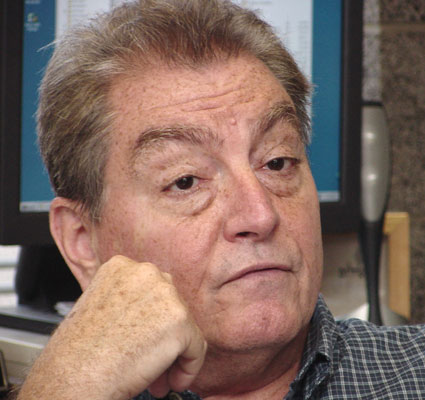 Al: Can you give me your take
on Osama and his gripes with Americans. Is it primarily being our troops being
on holy ground-that of Saudi Arabia. He does seem to be agitated about
modernity in the West, and it really seems to cause him concern. It seems that
the modernity issue empowers or motivates him to stop it.
Al: Can you give me your take
on Osama and his gripes with Americans. Is it primarily being our troops being
on holy ground-that of Saudi Arabia. He does seem to be agitated about
modernity in the West, and it really seems to cause him concern. It seems that
the modernity issue empowers or motivates him to stop it.
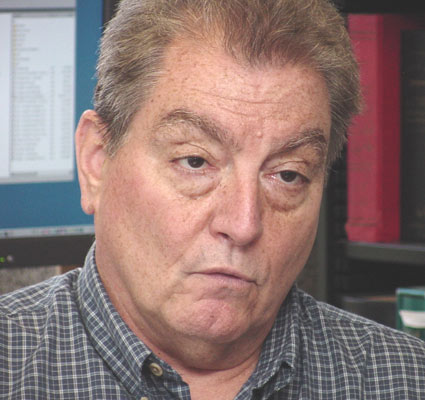 Al: Christianity and the West
had their problems with modernity during the Middle Ages. Even after that, the
church didn't respond well to modernity. The Vatican took off after Galileo and
we wrestled with the Scopes' Monkey trial.
Al: Christianity and the West
had their problems with modernity during the Middle Ages. Even after that, the
church didn't respond well to modernity. The Vatican took off after Galileo and
we wrestled with the Scopes' Monkey trial.
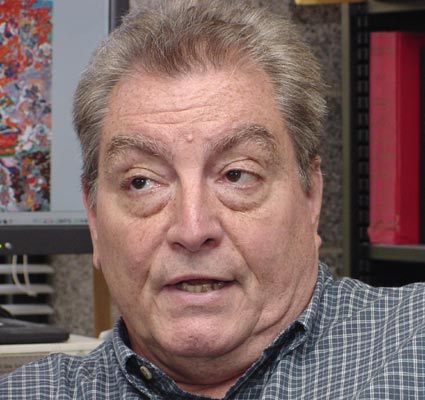 Al: Could you explain that?
Al: Could you explain that?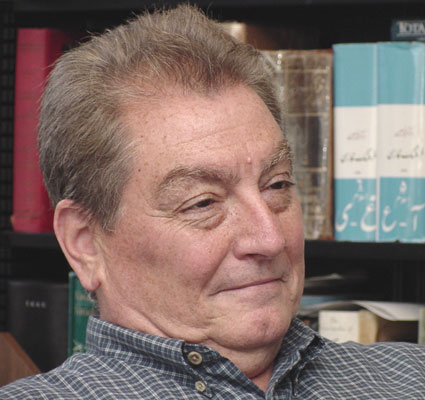 Al: Doesn't that bother you?
Al: Doesn't that bother you? Al: Thanks for the information; I have often wondered about it. In closing, what are your plans
for returning to Mongolia?
Al: Thanks for the information; I have often wondered about it. In closing, what are your plans
for returning to Mongolia?